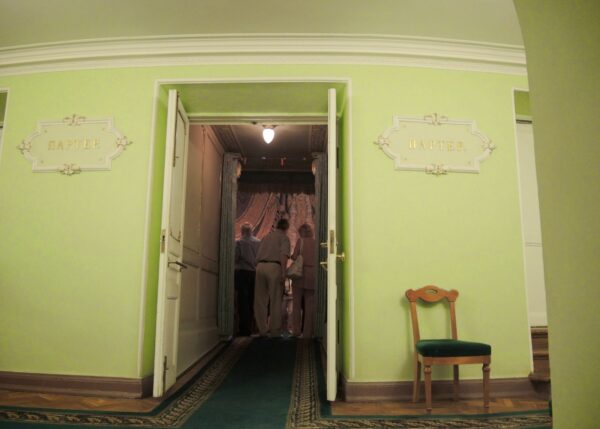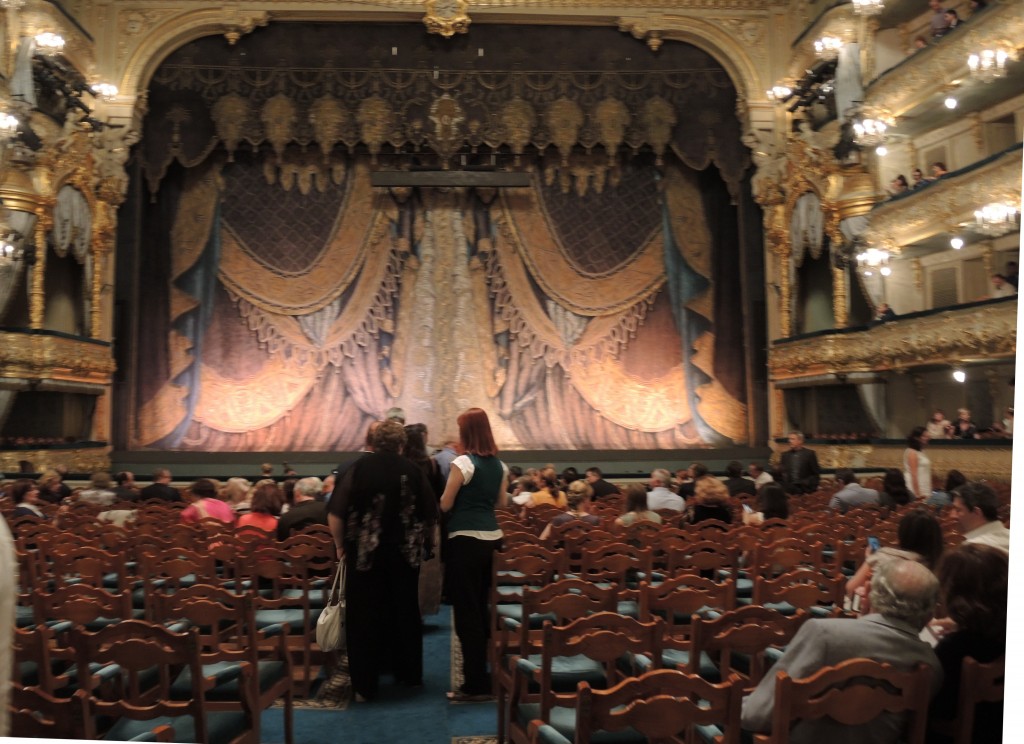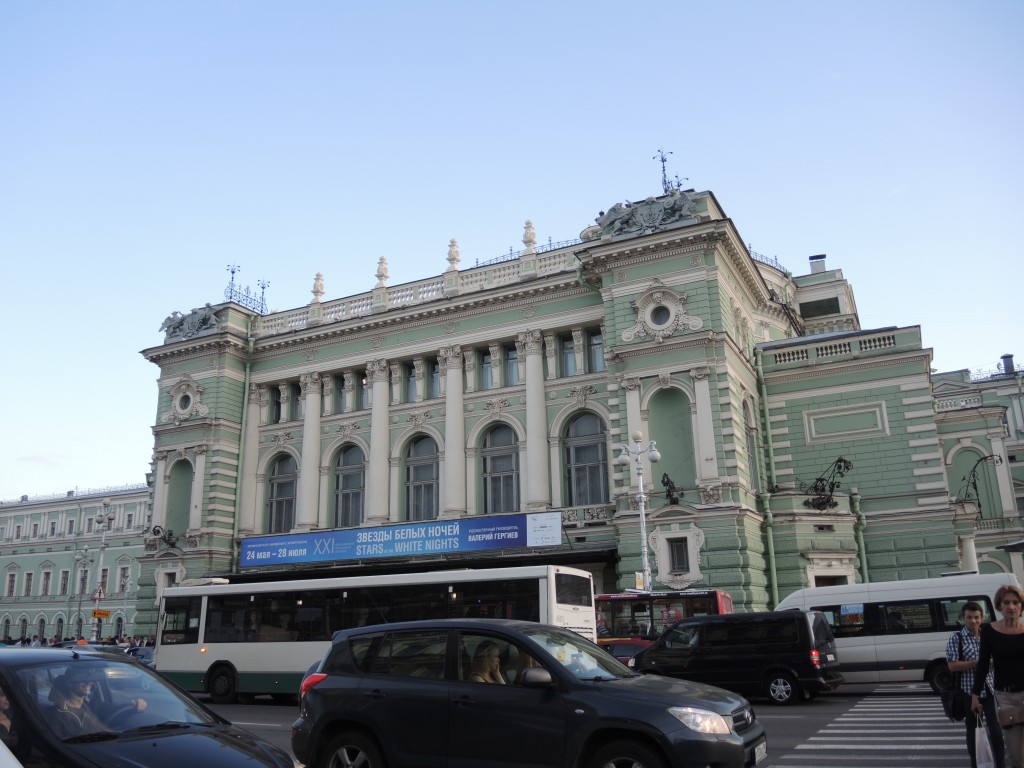20 June – Evening.
Even on this penultimate day of our tour, our group remained closely bonded and wanted to eat together. And of course, we still wanted to eat Russian food. So, at the end of our three-hour walking tour of Saint Petersburg, we asked our guide, Mike, to suggest someplace we could have a Russian lunch. He directed us to a nearby pub – this one Irish by name – assuring us that, in general, the pubs served the most authentic Russian food in the city regardless of the ethnicity in the name. I had ukha – a fish soup with potatoes, onions, carrots, and chunks of white perch served with two fish pastries. The meal was fine, even if the soup was a little bland, and, in a pleasant surprise, the service mistakes were minimal.
We walked slowly back to the hotel covering a distance of about four kilometers and it was late afternoon when we reached it. I was feeling the effects of my cold, my still achy knee, and the tossing and turning of the last night on the train so I opted to take a rest before setting off to a “Stars of the White Nights” performance of La Nozze di Figaro scheduled for a 19:00 curtain at the old Mariinsky Theater. Lu, Ana, Rose, and Erin would be off to see Swan Lake at the new Mariinsky and Groud, John, and Anne went to a free performance (of opera as it turned out) in Palace Square. Saint Petersburg absolutely bustles during the White Nights festival which, though it typically runs from mid-June to early July, I think must reach its climax during the days we were there given that tomorrow will be the solstice – the longest day of the year.
Still feeling a bit lethargic, or perhaps simply lazy, Groud helped me order an expensive cab to take me to the theater. The fare was 450 rubles (about $15) for a 5-kilometer (3.2 mile) ride. I knew that a few hours of Mozart would miraculously cure both my lethargy and injury enough to allow me to walk back after the show – especially after I learned those cabs wanted 1,000 non-negotiable rubles for the same trip.
Let me start with the theater. It was attractive but I thought somewhat unprepossessing from the outside and even after entering.

However, once inside, I found it was quite spectacular. (You’ll be able to make your own judgment from the photo below.) The theater opened in 1860 and I was told that the stage curtain is the original. It is currently home to the Mariinsky Ballet, the Mariinsky Opera, and Mariinsky Orchestra. But, I can hear you thinking, I thought it was the home of the famous Kirov Ballet. Well, in a sense it is. The theater was renamed the Kirov Theater during the Soviet era to honor Sergey Kirov who became head of the Communist Party organization in Leningrad. (Interestingly, later in his career Kirov was part of an organization within the party that opposed Stalin and he was eventually assassinated.) But back to the ballet company. It rose to great and well-deserved renown during the communist era so today the company continues to use Kirov for the sake of name recognition. More pictures of the theater are here.
My seat, by the way was just behind the man in the lower right corner of the picture above. Amazingly, this ticket only cost 2,900 rubles probably less than half the cost of a comparable seat at the Metropolitan Opera in New York. Of course, whereas I might have gotten a free Playbill or its equivalent in New York, I did have to purchase a 1 sheet “program” in English for 30 rubles. That’s still relatively inexpensive and, by this point in the trip, I’d certainly become accustomed to everything being a la carte in Russia.
As for the show itself, the orchestra was wonderful but the sopranos far out sung their male counterparts. Now, it’s not terribly unusual for the baritone not to project very strongly over the orchestra in the Count’s long aria ‘Hai gia vinta la causa’ in Act Three, but Andrey Bodarenko might as well have been miming the final note as his voice carried not at all – at least no to my seats. I thought Vadim Kravets’ Figaro had similar problems throughout the production as well.
I thought the audience, too, was a bit odd. They didn’t applaud at all following any aria in the first two acts but they began to do so after the intermission. Then, when they began rhythmically applauding during the set change between Acts Three and Four after the corps took a collective bow following the wedding scene at the end of Act Three, I interpreted it as confusion. (On the other hand, it’s possible this is expected and typical behavior and I’m simply guilty of making a cultural misinterpretation.) It may not have been the best or most lavish performance imaginable but overall, it was well done. And in truth, I can think of no better way to spend an evening. It was Mozart, after all, and the music to the fourth act is so sublime that such a night at the opera can only be a lovely evening.
When I exited the theater at 22:30, I crossed the street and took this photograph:
This isn’t merely to show you the theater’s exterior, but so you can see the Saint Petersburg sky an hour and a half before midnight. In this near daylight, I strolled along the canals until I reached Nevsky – still teeming with people – then turned toward the hotel thinking about tomorrow – our last full day in Saint Petersburg – and our last full day as a band of travelers.


Hi Todd! So nice to run into you today! My husband and I found your blog and we are enjoying perusing through your beautiful photos! I love the architecture on the theatre in St. Petersburg! I’m so jealous! Thank you so much for sharing! I look forward to seeing more! or rather, WE look forward to seeing more!
Good to see you, too, Heather.